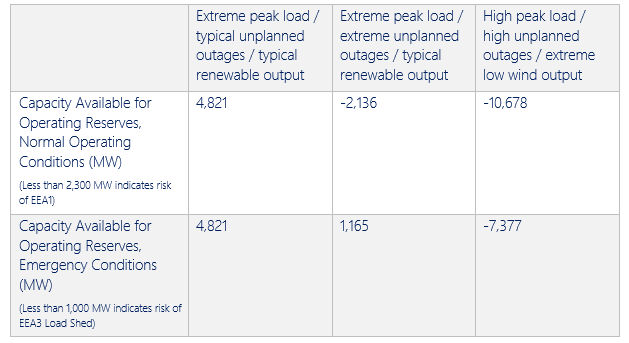Insights
better business decisions
Posted 3 years ago | 3 minute read

ERCOT expects sufficient capacity this fall
The Texas grid operator has said under normal system conditions it expects to have sufficient installed generating capacity to serve peak demands in the upcoming fall season.
In its latest Seasonal Assessment of Resource Adequacy (SARA), published on 6 September, ERCOT said it anticipates a fall 2022 peak demand of 64,928 MW during October and November – 16% below the peak demand projection for this summer and 20% below the actual peak demand record set on July 20. ERCOT expects this fall window to provide time for plants to undergo the maintenance that was postponed over the spring and summer months.
ERCOT expects to have 93,492 MW of capacity available, a slight increase from what they projected to have available at peak demand during the summer. That expected peak capacity is 68% of the total installed generation capacity.
ERCOT anticipates there will be 93,492MW of resource capacity available during fall peak demand hours, which includes 5MW of additional planned utility-scale solar capacity. By source, 68% of the capacity of 93,492MW is from thermal generation (natural gas, coal, and nuclear), while 15% is from wind and 9% is from solar. ERCOT also expects to have 2,623MW of operational battery storage resources, which includes 23MW of planned additions.
Under the three elevated risk scenarios only one (low renewable output) results in the need for rotating outages. Among the three extreme risk scenarios, the most severe one — defined with a combination of high peak load, high unplanned thermal outages, and extreme low wind output — also results in rotating outages.

Separately the Energy Plan Advisory Committee released its final report on the industry as ordered by the Texas Legislature as part of its post-2021 blackout reforms. According to the report, published September 1st, “the devastation caused by Winter Storm Uri in 2021 illustrated both structural and operational deficiencies in the existing wholesale electric market”.
A key problem identified by the committee is how best for the state to “adapt to the changing electric generation resource mix and support market-based incentives to ensure that the generation resource supply is adequate, resilient.”
But the report noted that installed generation capacity from dispatchable thermal generation is declining significantly due to unit retirements; ERCOT recently reported that of the 217,824MW of generation interconnection requests currently being tracked, only about 11,000MW is for new natural gas projects. As such, the key reliability issue facing ERCOT will be to ensure adequate dispatchable generation is available during times of low non-dispatchable output. As such, the committee recommended renewables generators be required to supplement with dispatchable backup generation during times of low renewables output. The committee also recommended that the state evaluate “demand response” mechanisms to better support renewables integration.

Here’s how to play it so you could make $185,000 per MW per year in ERCOT
The electricity landscape is changing, which is significantly increasing costs and risks for businesses. The complexity of the ERCOT market is a challenging landscape. But with any challenge comes opportunity…if you have the right technology.
Learn more





